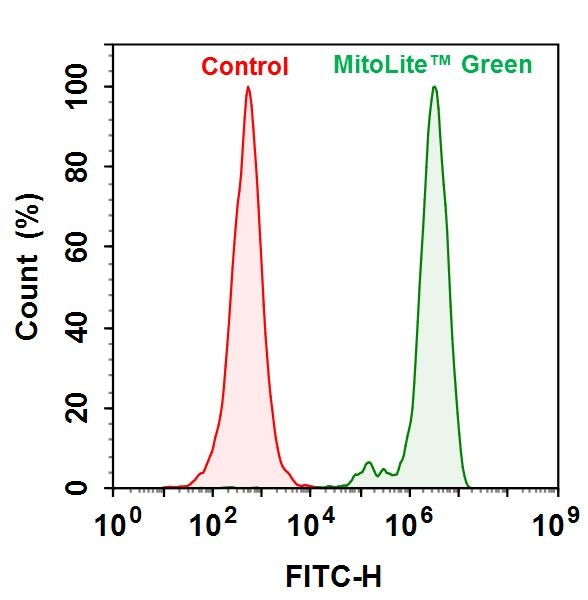ReadiPrep™ Mitochondrial/Cytoplasmic Fractionation Kit
The ReadiPrep™ Mitochondrial/Cytoplasmic Fractionation Kit offers a convenient method for isolating mitochondria and cytoplasmic fractions from mammalian cells or tissue. The isolated mitochondria are intact and can be positively stained with a mitochondria marker (such as MitoLite™ Green). The isolated mitochondria preserve their biological activities and are compatible with many downstream applications including the study of mitochondrial respiration, mitochondria membrane potential, apoptosis, mtDAN and mtRNA, and mitochondrial protein profiling etc. The kit offers two options for the isolation of mitochondria. One option utilizes a reagent-based method which allows multiple sample preparation at the same time. The second option utilizes Dounce homogenization.


| Catalog | Size | Price | Quantity |
|---|---|---|---|
| 60005 | 50 Tests | Price |
Storage, safety and handling
| H-phrase | H303, H313, H333 |
| Hazard symbol | XN |
| Intended use | Research Use Only (RUO) |
| R-phrase | R20, R21, R22 |
| UNSPSC | 12352200 |
Contact us
| Telephone | |
| Fax | |
| sales@aatbio.com | |
| International | See distributors |
| Bulk request | Inquire |
| Custom size | Inquire |
| Technical Support | Contact us |
| Request quotation | Request |
| Purchase order | Send to sales@aatbio.com |
| Shipping | Standard overnight for United States, inquire for international |
Page updated on December 16, 2025
